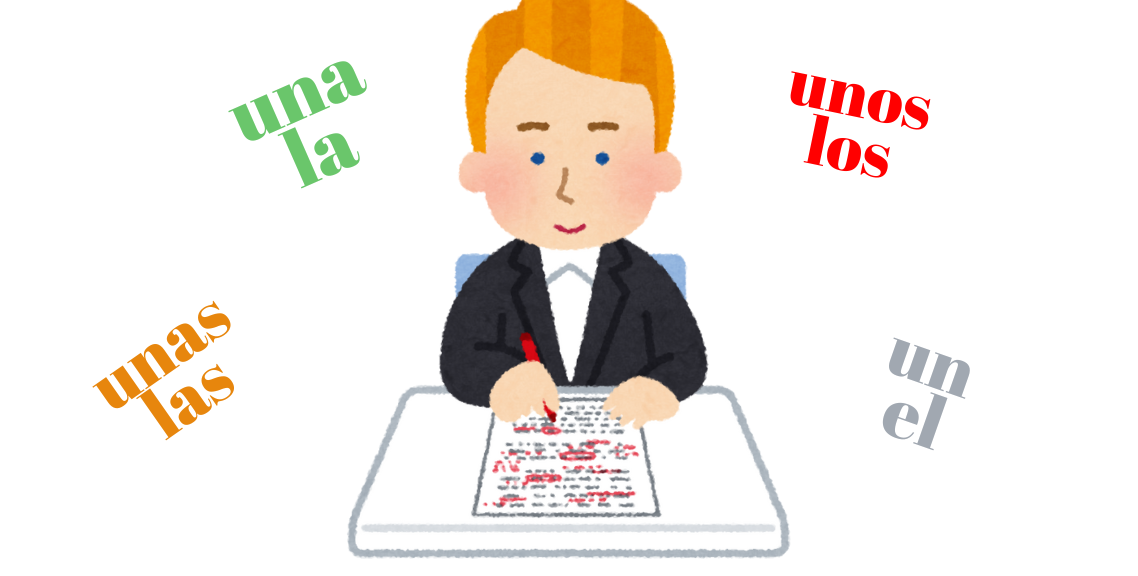Tengo muchas ganas de verte: indefinite adjectives (II)
e continue in this article with indefinite adjectives in Spanish. These are, as a reminder, adjectives that express the existence of something or its quantity in an imprecise way. In this particular article, we will look at the adjectives mucho, poco, demasiado, and suficiente. We will also see that some of them can also be used as adverbs.
In a previous article, we looked at the indefinite adjectives todo, cada, algún, ningún, otro, and cualquier. If you haven’t read it yet or if you want to review them, you can find it here.
Mucho: The adjective mucho indicates a large quantity of something. It can modify nouns and also function as an adverb when accompanying a verb. As an adjective, it has the forms masculine singular (mucho), feminine singular (mucha), masculine plural (muchos), and feminine plural (muchas). In other words, it agrees in grammatical gender and number with the noun it modifies. The singular forms are generally used with uncountable nouns, while the plural forms are used with countable nouns. Let’s see some examples.
Tengo mucho trabajo. I have a lot of work.
Hay mucha humedad hoy. There is a lot of humidity today.
Yo, por suerte, tengo muchos amigos. Luckily, I have many friends.
Tengo muchas ganas de verte. I really want to see you.
It also functions as an adverb, meaning it can be used to modify different aspects of the verbal action. Adverbs are invariable, meaning they do not have grammatical gender or number. In the case of adjectives that can be used as adverbs, the adverbial form generally matches the masculine singular form of the adjective.
Hoy llovió mucho. It rained a lot today.
Tú trabajaste mucho ayer. You worked a lot yesterday.
Poco: The adjective poco, on the other hand, indicates a small or scarce quantity of something. Like mucho, it has the forms masculine singular (poco), feminine singular (poca), masculine plural (pocos), and feminine plural (pocas), so it also agrees with the noun in grammatical gender and number. The singular forms are generally used with uncountable nouns, while the plural forms are used with countable nouns.
Queda poco aceite, ¿podrías comprar más? There is little oil left, could you buy more?
Poca gente sabe lo que te voy a contar. Few people know what I’m going to tell you.
Uruguay es un país que tiene pocos habitantes. Uruguay is a country that has few inhabitants.
Esta torta tiene pocas nueces. This cake has few nuts.
Just like mucho, it can be used as an adverb.
Ayer estudié poco porque estaba cansado. Yesterday, I studied little because I was tired.
Caminé poco, hacía mucho calor. I walked little, it was very hot.
A common use of poco is with the indefinite article un alongside uncountable nouns or even with verbs. In this case, it emphasizes that, although the quantity or intensity of something is scarce, it is enough for, for example, the needs of the moment. In other words, while poco emphasizes scarcity, un poco indicates that the quantity is small but acceptable. Let’s see some examples.
Hay poco aceite. There is little oil. It emphasizes that more oil is needed.
Hay un poco de aceite. There is a little oil. It emphasizes that the oil available is enough for the need of the moment.
Caminé poco. I walked little. I walked less than I wanted to walk.
Caminé un poco. I walked a little. The distance was short, but at least I walked it.
Demasiado: The adjective demasiado indicates an excessive quantity, more than necessary or appropriate. It has a negative connotation. It has the forms masculine singular (demasiado), feminine singular (demasiada), masculine plural (demasiados), and feminine plural (demasiadas). The singular forms are generally used with uncountable nouns, while the plural forms are used with countable nouns.
Hay demasiado ruido en esta habitación. There is too much noise in this room.
Él tiene demasiada ropa en su armario. He has too many clothes in his closet.
Hay demasiados coches en la carretera hoy. There are too many cars on the road today.
Ella tiene demasiadas responsabilidades. She has too many responsibilities.
También puede ser utilizado como adverbio. It can also be used as an adverb.
Caminé demasiado, estoy extenuado. I walked too much, I’m exhausted.
Comí demasiado, tanto que me siento mal. I ate too much, so much that I feel sick.
Suficiente: The adjective suficiente expresses that the quantity of something is adequate for a purpose or for the needs of the moment. It does not have grammatical gender, but it does have a singular form (suficiente) and a plural form (suficientes). The singular form is used with uncountable nouns, while the plural form is used with countable nouns. While it cannot be used as an adverb, it can be used as a nominalized adjective introduced by the neuter pronoun lo. Although this usage goes beyond the level of language proficiency this article is aimed at, we will look at a couple of examples, as it is a very common usage in the language.
Compré suficiente comida como para toda la semana. I bought enough food for the whole week.
Tengo suficientes problemas yo mismo, esta vez no puedo ayudarte. I have enough problems myself, this time I can’t help you.
This will be material for another article, but we will briefly look at it here. In Spanish, there is a neuter article, lo, one of whose functions is to nominalize adjectives. That is, an adjective introduced by this article becomes a noun, as in “Lo bueno del invierno es la comida caliente.” This means that the good part of winter is hot food. It is a construction very frequently used in the Spanish language, both in spoken and written forms. In the case of the adjective suficiente, it is also quite commonly used. Let’s look at a couple of examples.
Dormí lo suficiente, no tengo sueño. I slept enough, I’m not sleepy. Meaning enough time.
Gano lo suficiente, no me hace falta más. I earn enough, I don’t need more. Meaning enough money.
I believe that, compared to the indefinite adjectives we saw in the previous article, these are easier to understand and use. However, the ones we covered in this article are also very frequently used in the language, so I hope this article has been helpful to you. As always, thank you for reading. I’ve left some exercises here for you to practice this topic, and if you have any questions, feel free to write to me.






Leave a Reply